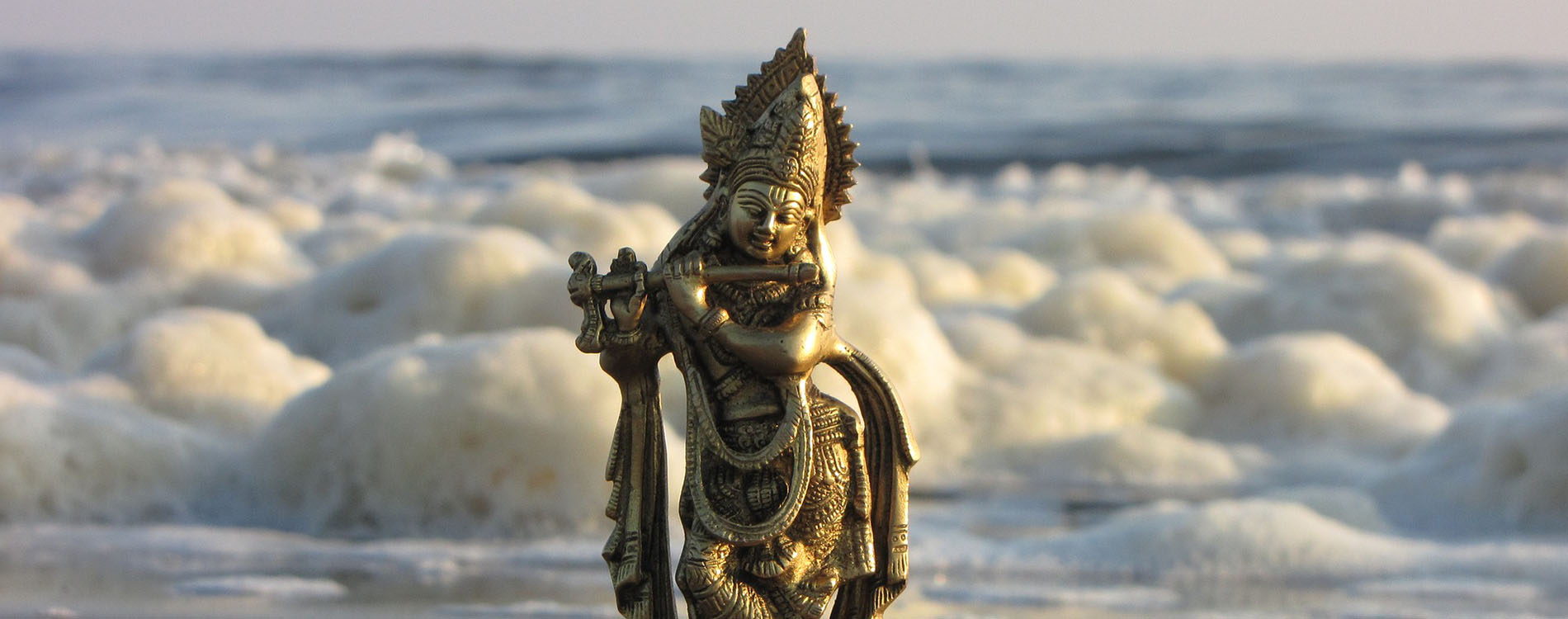Traditionally in Hinduism, three gods, Brahma, Vishnu, and Shiva, are worshipped as the supreme gods. These three deities form the Trimurti, the triad of the supreme gods of Hinduism. According to tradition, Brahma appears in the Trimurti as the creator god, Vishnu as the guardian god, and Shiva as the destroyer god. However, in the main religious branches of Hinduism, Vishnuism and Shivaism, the interpretation of the images of the Trimurti gods takes on a slightly different version. The role of the creator of the universe and the supreme deity is assigned to the most revered deity (Vishnu or Shiva, depending on the trend); the other deities are regarded as secondary. It is characteristic of these schools of thought to regard the gods they venerate, Vishnu or Shiva, as gods possessing many separate forms and hypostases.
Some modern schools of Hinduism, such as Gaudiya Vaishnavism, have developed the doctrine of expansions – separate hypostases of the deity reflecting a particular aspect or property of the deity.A special aspect of the concept of the hypostases of gods is the teaching of avataras – full or partial incarnations of the deity in human form. The concept of avatars is most consistently developed in Vishnuism, where some of the avatars of Vishnu (such as Rama and Krishna) are venerated on a par with Vishnu himself, and sometimes even more than Vishnu himself. According to Vishnuist conceptions, an avatar differs from an expansionship in that his incarnation is always associated with the fulfillment of a specific mission. Thus, for example, Vishnu incarnates as Parashurama to protect the Brahmans from oppression by the kshatriyas; as Rama he wages war against the Rakshasa kingdom on the island of Lanka; as Krishna he saves the kingdom from the tyranny of his uncle and acts as a teacher of God and liberation on the threshold of the Black Age; finally, as Kalki-avatar he will incarnate at the end of the Black Age to purify the world of evil and renew the world.
A special role in these directions is played by the divine consorts of the supreme gods, Lakshmi (in Vishnuism) and Devi (in Shivaism). The vision of the images of these goddesses, each in her own direction, is quite specific. For example, Lakshmi is venerated in Vishnuism as the goddess of happiness, while her human incarnations in various Vishnuist sects are considered to be the spouses of Vishnu’s avatars (Sita, the wife of Rama, Rukmini and/or Radha, the wife of Krishna). Devi, like her husband, is represented as a goddess with many guises, ranging from Parvati, who symbolizes fidelity, to militant Durga and Kali, the destroyer. According to the teachings of some Shivaite sects, Devi is the goddess of the feminine, while her hypostasis represents some of her qualities, either good or destructive.
Two gods revered in Hinduism are also associated with Shiva. These are the sons of Shiva, Skanda, the god of war, and Ganesha, the god of wisdom. The cult of the latter is very popular in India. Ganesha is presented not only as the patron of wisdom and writing, but also as the creator and at the same time the remover of obstacles. The veneration of Ganesha is associated with the custom of beginning any important literary work with a dedication to this god, as well as the recitation of prayers, which express a request for the removal of obstacles to the happy resolution of all affairs and undertakings. Skanda is revered in Hinduism as the god of war, and in Shivaism also as the god of protection, guardian of faith and patron of yoga.
Otherwise the pantheon of Hinduism is very diverse. Going back to the Vedas, the Hindu tradition has thirty-three major deities, divided into three classes of gods-twelve Adityas, eight Vasu, eleven Rudras, and two Ashvinas. In addition to the deities brought into Hinduism from the religion of the Vedas, however, the pantheon also included pre-Aryan deities, such as Murugan, the Dravidian deity of war, or deified characters from epics like the ape-like Hanuman, revered even today as the divine guide and protector of rural life. A special role in the pantheon of Hinduism is played by the four lokapalas, the guardians of the world. These four include Indra, god of thunder and ruler of the eastern side of the world; Yama, god of death, lord of the realm of the dead and ruler of the south; Varuna, god of waters and ruler of the west; Kubera, god of wealth, guardian of underground treasures and ruler of the north.
A separate class of sacred beings associated with the gods in Hinduism are deified animals or zoomorphic characters. The best known are two classes of such characters: vahans and diggadhis. Vahanas in Hinduism are the riding animals of the gods, and each god has his own vahana. Some vahanas are nameless, such as Brahma’s swan, Durga’s lion, or Ganesha’s mouse. Some, on the contrary, have names, such as Shiva’s bull Nandin or Garuda, the bird-like deity on which Vishnu rides. Diggaji, the four world elephants supporting the earth, are directly related to the Lokapalas.
